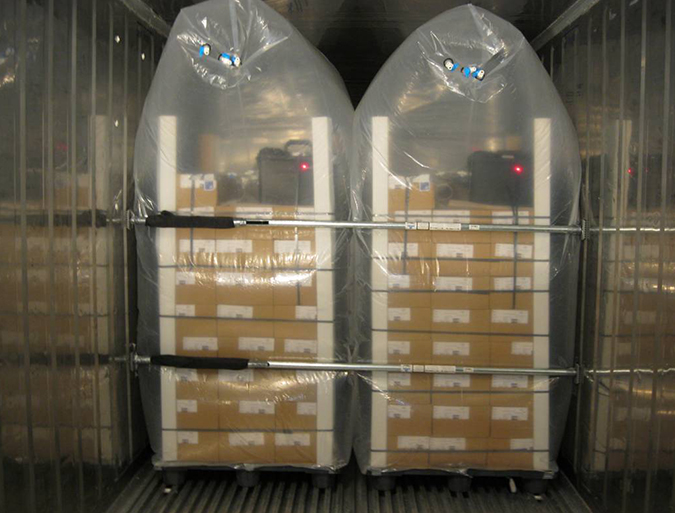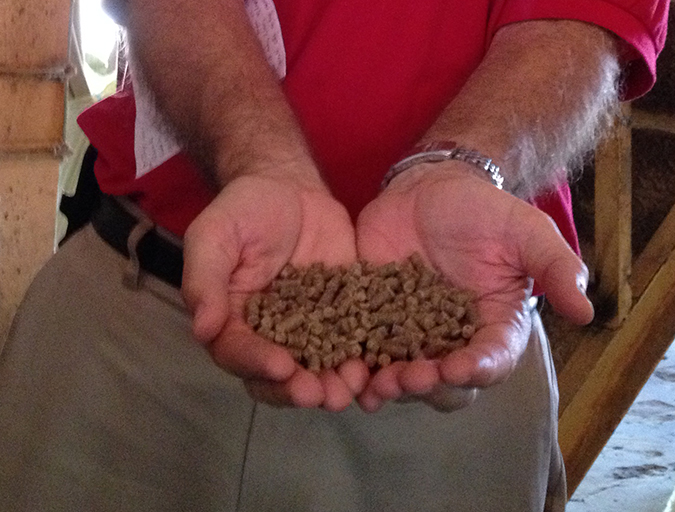Investors, feed manufacturers see black solider flies as legitimate alternative fishmeal ingredient

The race is on to find a viable solution to the aquaculture industry’s dependence on forage fish. Growing demand for this finite resource means the days of cheap fishmeal and fish oil are long gone.
Plenty of contenders are sprinting toward a solution. Soy has widespread support. Other say the most promising alternative is microalgae, seaweed or microbes, or some yet-developed combination. But some industry insiders are betting big on bugs – and they have good reason to be hopeful.
“We’ve been tracking every insect company on the planet and we’re really excited,” said Amy Novogratz, managing partner of AquaSpark, a Netherlands-based “impact” investment fund that looks for ventures that have economic, environmental and social benefits.
Companies like Enterra, Entofood, AgriProtein, Ynsect and EnviroFlight are hoping to be the first to take wing. Crickets, weevils, grubs and mealworms are all being looked at, but most eyes are focused on the beneficial black soldier fly.
“The soldier fly is the answer,” said Entofood CEO Franck Ducharne. “It grows very quickly. Hatch to harvest is only 10 to 12 days.”
While the words “fly” and “maggot” can carry a pretty strong “ick” factor with consumers, these shouldn’t be confused with common houseflies. Black soldier flies don’t bite, sting or spread diseases. They’re high in protein, have a strong amino acid profile and are easily digested. Novogratz isn’t worried about the marketplace reaction.
“We think it would be an easy message for people who prefer a natural feed for their fish. Consumers don’t want a ton of information,” said Novogratz.
Thus far, tests on trout, yellowtail, turbot, yellow perch and other species have shown promising results. Rick Barrows, a research nutritionist with the U.S. Department of Agriculture’s Agricultural Research Service has been testing black soldier fly meal in rainbow trout diets.
“We just finished the growth phase of the feeding study with defatted [black soldier fly] meal. No fishmeal. And the trout grew just as fast as the fishmeal control group,” said Barrows. “There’s something in black soldier flies that’s highly palatable. Trout are eager to eat it.”
A use for wasted food

Right now, fish producers rely primarily on fishmeal and soy to meet feed requirements. Soybeans have lightened much pressure on forage fish stocks, but soy production requires a great deal of land, and most soy is grown in the United States, Brazil, Argentina, China and India. The rest of the world, including countries with robust aquaculture industries like Vietnam, Bangladesh, Indonesia and Norway, relies on imports.
For those looking for a lighter environmental footprint, it turns out that black soldier flies are more than just potential protein for fish. They’re promising powerhouses that can be used to help convert the 1.3 billion tons of food waste produced each year – an issue that’s gaining traction globally. Black soldier fly waste (produced after chowing down on all those food scraps) is valuable as compost, another checkmark in its column.
“Every country in the world has a need for protein and has food waste,” said Ducharne. While Entofood is currently based in Malaysia, Ducharne said its plan is to bring the technology to where fish production occurs. “We have a very important mission – to find a sustainable solution to bring to industry.”
But ask around, and you’ll find a few critical hurdles the black soldier fly still must clear. Two of the biggest? Scalability and regulatory approval.
“The plants we visited are secure and clean and impressive. The drawbacks? If they’re going to be able to scale fast enough. The largest companies focusing on black soldier flies are producing 5,000 metric tons annually. Most aren’t even at capacity. When you’re talking about the need for hundreds of millions of tons, you need a lot more investments and collaboration,” said Novogratz.
“The last five to six years we’ve been concentrating on the biology of the animal,” added Ducharne. “How to breed them and produce large amounts of eggs.”
Black soldier flies will never be as abundant as soy – the most abundant protein source on earth. But we need a high quality alternative ingredient that’s local.
He said it was the same problem facing the shrimp industry when it was in its infancy.
“The main issue then was the hatchery. Shrimp growers relied on wild postlarvae until the technology was mastered,” he said. “Here it’s exactly the same. The secret is to be efficient and strong in the hatchery part of the business.”
Ohio-based EnviroFlight has the technology to scale up and is focusing on its first major commercial plant, according to the company founder, Glen Courtright.
“We had to reinvent the wheel to scale the technology and make it commercially viable,” said Courtright. “There have been myriad challenges,” including a fire that destroyed the company’s mating chamber and a power outage during subzero temperatures that killed off much of his broodstock.
In February, the company was acquired by Intrexon Corporation, which formed a joint venture with Darling Ingredients, providing the financial backing the company needs.
EnviroFlight isn’t the only outfit ready to go big with bugs. According to ImpactAlpha, Canada’s Enterra Feed Corp. plant will have the “capacity to transform 36,000 tons of food waste each year into 2,500 tons of protein and oil and 3,000 tons of organic fertilizer.”
Still not enough to meet the $60 billion global animal feed industry needs, but a promising start.
What about omega-3s?

A bigger hurdle than scalability may be regulatory approval. Right now, the use of insect meal in agriculture and aquafeeds is still mostly prohibited in the United States and Europe. (In October 2015, the European Food Safety Authority published its first risk assessment of insects in food and feed.)
In the United States, the FDA will not approve a broad, undefined term like “insect meals.” Each insect-based product would have to be reviewed by regulators individually – a long and often complicated process. For example, a mealworm and a black soldier fly may have far different protein levels. Do they eat things that could accumulate toxins that might be bad for certain animal? Are they being fed pre-consumer food waste, animal waste or post-consumer waste? Substrate matters.
“What the insects are raised on is important. A lot of companies develop plans to take in waste and discount that,” said Richard Ten Eyck, an Association of American Feed Control Officials (AAFCO) board member. “The FDA is looking for feed-grade material, something that is OK to feed livestock. But they’re not real jazzed on the other stuff that may contain pesticides, heavy metals or things that might bioaccumulate.”
The closest to getting regulatory approval is the black soldier fly dried larvae.
“That one is up for an association vote in August, and once the association accepts it, if they do, then that would be OK to put in animal feed using [the approved] definition,” said Ten Eyck.
Courtright added that it’s important to remember that black soldier flies aren’t a silver bullet, but an ingredient.
“It’s an ingredient that’s part of an overall balanced ration,” he said.
Harvest the black soldier flies too late, and the chitin, found in the exoskeleton of insects, can contain nitrogen, which isn’t easily digestible. And while the flies contain many of the nutrients carnivorous fish need, they don’t contain the omega-3 fatty acid levels found in fishmeal and fish oil.
“You can boost omega-3 levels in black soldier fly larvae if you feed them an omega-3 feed stock. Whether that’s cost effective or not depends on the substrate we use – like seafood trimmings, for example,” said Courtright.
Barrows isn’t convinced the lack of naturally found omega-3s is a problem.
“We can replace fishmeal with other protein ingredients. What we’re looking for is good protein and good lipid ingredients,” he said. “Black soldier flies will never be as abundant as soy – the most abundant protein source on earth. But we need a high quality alternative ingredient that’s local. It’s definitely promising.”
Now that you've reached the end of the article ...
… please consider supporting GSA’s mission to advance responsible seafood practices through education, advocacy and third-party assurances. The Advocate aims to document the evolution of responsible seafood practices and share the expansive knowledge of our vast network of contributors.
By becoming a Global Seafood Alliance member, you’re ensuring that all of the pre-competitive work we do through member benefits, resources and events can continue. Individual membership costs just $50 a year.
Not a GSA member? Join us.
Author
-

Clare Leschin-Hoar
California-based journalist Clare Leschin-Hoar covers food policy and seafood. Her work has appeared in The Guardian, NPR, Scientific American, EatingWell and many more. Follow her on Twitter: @c_leschin
Tagged With
Related Posts

Responsibility
Slow fish: Preventing waste via packaging
BluWrap shipping technology can cut the seafood industry's abysmal food-waste statistics by dramatically extending the shelf life of fresh product. Company CEO Mark Barnekow's mission is to get fresh fish off airplanes and onto ocean-bound cargo ships.

Aquafeeds
F3 blows past funding goals as fishmeal alternatives proliferate
A competition designed to drive innovation in aquafeeds has doubled its original funding goal and has attracted some of the biggest names in fish feed. F3 has also served as a catalyst for collaboration among feed manufacturers and ingredient suppliers.


